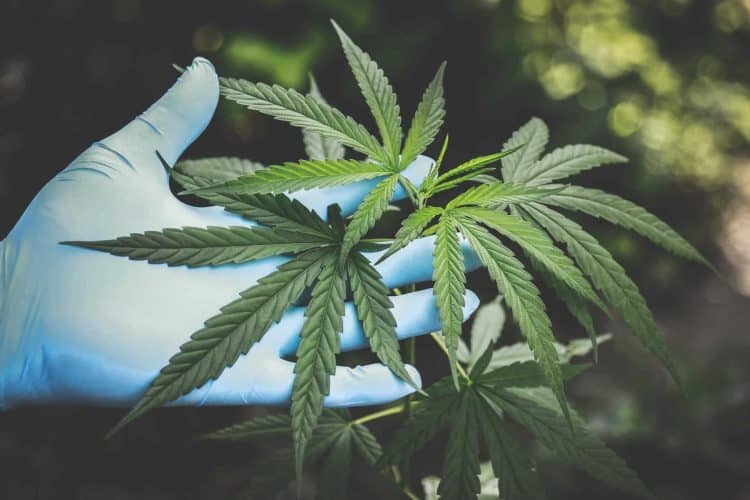Cannabidiol (CBD) isolate is an extraction from the cannabis/hemp plant that filters out other cannabinoids, terpenes, and plant compounds to single out CBD. Whole plant CBD can initially be separated from cannabis using various extraction techniques, including supercritical carbon dioxide (CO2), ethanol, and butane. CO2 extraction has been said to offer cleaner oils compared to other extraction methods. [1]
Extraction is the first step to isolation. The crude extract then goes through two refinement processes: winterization and decarboxylation.
Winterization removes undesirable constituents like plant waxes. Decarboxylation transforms cannabidiolic acid (CBDA) into CBD — a process that heats the oil for a fixed time period. [2] Microwave-assisted and Soxhlet extraction are also viable strategies for decarboxylation.
This winterized/decarboxylated oil is subsequently distilled to further concentrate CBD by fractionating it from the other ingredients that remain in the batch. Chromatography may also be used to further refine the distillate, creating a high purity product.
To thoroughly mix with the solvent, the distillate must first be heated to liquify. The temperature that you heat the distillate to should be within approximately 5-10°C of the solvent. The non-polar solvent (e.g., pentane, hexane, or heptane) is also heated to within approximately 5°C of its boiling point, ideally via reflux. The distillate is then dissolved in the solvent using a ratio of one gram of solvent per two grams of distillate.
This mixture is subsequently heated and cooled to precipitate CBD into a solid form. Larger crystals can be formed by a slower cool down; subsequently, finer crystals result from a quicker cool down period. The precipitate is washed with the same solvent (cooled to 0°C) used to promote crystallization such that any residual contamination can be rinsed away.
Once washed, the powder should be homogenized to promote even drying, and put in a vacuum oven for approximately 48 hours (time will vary) to purge the product of residual solvents. Analytical chromatography is used to quantify the concentration and therefore the purity of the CBD solids.
CBD isolate provides researchers with a purified material for use in clinical research, where dosing can be simplified and the resultant physiological effects can be gauged more accurately. The debate regarding the efficacy of CBD isolate versus CBD-rich oils, however, continues. GW Pharmaceuticals Epidiolex™ uses CBD isolate but a meta-analysis of 11 studies covering 670 patients reported that “CBD-rich extracts seem to present a better therapeutic profile than purified CBD” among infant and juvenile patients of treatment-resistant forms of epilepsy like Lennox-Gastaut or Dravet syndrome.” [3]
It should be noted that this traditional technique isn’t one’s only option. Supercritical fluid chromatography provides a greener alternative to using organic solvents like pentane that require remediation. Stay tuned for Part 2 of this article to learn more.
Reference Sources
- Pavlovic, R. “Quality Traits of ‘Cannabidiol Oils’: Cannabinoids Content, Terpene Fingerprint and Oxidation Stability of European Commercially Available Preparations.” Molecules: A Journal of Synthetic Chemistry and Natural Product Chemistry, vol. 23, 2018, 1230. [journal impact factor = 3.060; timed cited = 17 (SemanticScholar)]
- Wang, M. et al. “Decarboxylation Study of Acidic Cannabinoids: A Novel Approach Using Ultra-High-Performance Supercritical Fluid Chromatography/Photodiode Array-Mass Spectrometry,” Cannabis and Cannabinoid Research, vol. 1.1, 2016, pp. 262-271. [journal impact factor = N/A; timed cited = 13 (SemanticScholar)]
- Pamplona, F. et al. “Potential Clinical Benefits of CBD-Rich Cannabis Extracts Over Purified CBD in Treatment-Resistant Epilepsy: Observational Data Meta-analysis”, Frontiers in Neurology, 2018, Volume 9: 759. [journal impact factor = 2.635; timed cited = 21 (SemanticScholar)]











